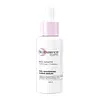What's inside
What's inside
 Key Ingredients
Key Ingredients

 Benefits
Benefits

 Concerns
Concerns

 Ingredients Side-by-side
Ingredients Side-by-side

Water
Skin ConditioningButylene Glycol
HumectantNiacinamide
SmoothingGlycerin
Humectant1,2-Hexanediol
Skin ConditioningAnhydroxylitol
HumectantCitric Acid
BufferingEthylhexylglycerin
Skin ConditioningHydrolyzed Cicer Seed Extract
Skin ProtectingPancratium Maritimum Extract
BleachingRhododendron Chrysanthum Leaf Extract
MaskingSodium Citrate
BufferingTocopherol
AntioxidantTricholoma Matsutake Extract
Skin ConditioningTrisodium Ethylenediamine Disuccinate
Xylitol
HumectantXylitylglucoside
HumectantWater, Butylene Glycol, Niacinamide, Glycerin, 1,2-Hexanediol, Anhydroxylitol, Citric Acid, Ethylhexylglycerin, Hydrolyzed Cicer Seed Extract, Pancratium Maritimum Extract, Rhododendron Chrysanthum Leaf Extract, Sodium Citrate, Tocopherol, Tricholoma Matsutake Extract, Trisodium Ethylenediamine Disuccinate, Xylitol, Xylitylglucoside
Water
Skin ConditioningPanthenol
Skin ConditioningMethylpropanediol
SolventBetaine
Humectant3-O-Ethyl Ascorbic Acid
Skin ConditioningHydroxypropyl Cyclodextrin
MaskingCyclodextrin
AbsorbentPolydextrose
HumectantResveratrol
AntioxidantPEG-12 Dimethicone
Skin ConditioningSclerotium Gum
Emulsion StabilisingSodium Polyacryloyldimethyl Taurate
Emulsion StabilisingBis-PEG-18 Methyl Ether Dimethyl Silane
EmollientSodium Hyaluronate
HumectantGlyceryl Stearate
EmollientAlpha-Arbutin
AntioxidantPolysorbate 80
EmulsifyingEthylhexylglycerin
Skin ConditioningLimonia Acidissima Extract
Skin ConditioningNiacinamide
SmoothingPentylene Glycol
Skin ConditioningBroussonetia Papyrifera Bark Extract
Skin ConditioningAcetyl Glucosamine
Skin ConditioningMorus Alba Bark Extract
Skin ConditioningPyrus Malus Fruit Extract
Skin ConditioningCamellia Japonica Flower Extract
EmollientCamellia Sinensis Leaf Extract
AntimicrobialMadecassoside
AntioxidantRhus Semialata Extract
Skin ConditioningTricholoma Matsutake Extract
Skin ConditioningLactic Acid
BufferingButylene Glycol
HumectantDextran
Nonapeptide-1
Skin ConditioningEuglena Gracilis Extract
Skin ConditioningPotassium Sorbate
PreservativeTocopherol
AntioxidantPhenoxyethanol
PreservativeChlorphenesin
AntimicrobialSodium Metabisulfite
AntioxidantDisodium EDTA
Water, Panthenol, Methylpropanediol, Betaine, 3-O-Ethyl Ascorbic Acid, Hydroxypropyl Cyclodextrin, Cyclodextrin, Polydextrose, Resveratrol, PEG-12 Dimethicone, Sclerotium Gum, Sodium Polyacryloyldimethyl Taurate, Bis-PEG-18 Methyl Ether Dimethyl Silane, Sodium Hyaluronate, Glyceryl Stearate, Alpha-Arbutin, Polysorbate 80, Ethylhexylglycerin, Limonia Acidissima Extract, Niacinamide, Pentylene Glycol, Broussonetia Papyrifera Bark Extract, Acetyl Glucosamine, Morus Alba Bark Extract, Pyrus Malus Fruit Extract, Camellia Japonica Flower Extract, Camellia Sinensis Leaf Extract, Madecassoside, Rhus Semialata Extract, Tricholoma Matsutake Extract, Lactic Acid, Butylene Glycol, Dextran, Nonapeptide-1, Euglena Gracilis Extract, Potassium Sorbate, Tocopherol, Phenoxyethanol, Chlorphenesin, Sodium Metabisulfite, Disodium EDTA
 Reviews
Reviews

Ingredients Explained
These ingredients are found in both products.
Ingredients higher up in an ingredient list are typically present in a larger amount.
Butylene Glycol (or BG) is used within cosmetic products for a few different reasons:
Overall, Butylene Glycol is a safe and well-rounded ingredient that works well with other ingredients.
Though this ingredient works well with most skin types, some people with sensitive skin may experience a reaction such as allergic rashes, closed comedones, or itchiness.
Learn more about Butylene GlycolEthylhexylglycerin (we can't pronounce this either) is commonly used as a preservative and skin softener. It is derived from glyceryl.
You might see Ethylhexylglycerin often paired with other preservatives such as phenoxyethanol. Ethylhexylglycerin has been found to increase the effectiveness of these other preservatives.
Niacinamide is a multitasking form of vitamin B3 that strengthens the skin barrier, reduces pores and dark spots, regulates oil, and improves signs of aging.
And the best part? It's gentle and well-tolerated by most skin types, including sensitive and reactive skin.
You might have heard of "niacin flush", or the reddening of skin that causes itchiness. Niacinamide has not been found to cause this.
In very rare cases, some individuals may not be able to tolerate niacinamide at all or experience an allergic reaction to it.
If you are experiencing flaking, irritation, and dryness with this ingredient, be sure to double check all your products as this ingredient can be found in all categories of skincare.
When incorporating niacinamide into your routine, look out for concentration amounts. Typically, 5% niacinamide provides benefits such as fading dark spots. However, if you have sensitive skin, it is better to begin with a smaller concentration.
When you apply niacinamide to your skin, your body converts it into nicotinamide adenine dinucleotide (NAD). NAD is an essential coenzyme that is already found in your cells as "fuel" and powers countless biological processes.
In your skin, NAD helps repair cell damage, produce new healthy cells, support collagen production, strengthen the skin barrier, and fight environmental stressors (like UV and pollution).
Our natural NAD levels start to decline with age, leading to slower skin repair, visible aging, and a weaker skin barrier. By providing your skin niacinamide, you're recharging your skin's NAD levels. This leads to stronger, healthier, and younger looking skin.
Another name for vitamin B3 is nicotinamide. This vitamin is water-soluble and our bodies don't store it. We obtain Vitamin B3 from either food or skincare. Meat, fish, wheat, yeast, and leafy greens contain vitamin B3.
The type of niacinamide used in skincare is synthetically created.
Learn more about NiacinamideTocopherol (also known as Vitamin E) is a common antioxidant used to help protect the skin from free-radicals and strengthen the skin barrier. It's also fat soluble - this means our skin is great at absorbing it.
Vitamin E also helps keep your natural skin lipids healthy. Your lipid skin barrier naturally consists of lipids, ceramides, and fatty acids. Vitamin E offers extra protection for your skin’s lipid barrier, keeping your skin healthy and nourished.
Another benefit is a bit of UV protection. Vitamin E helps reduce the damage caused by UVB rays. (It should not replace your sunscreen). Combining it with Vitamin C can decrease sunburned cells and hyperpigmentation after UV exposure.
You might have noticed Vitamin E + C often paired together. This is because it is great at stabilizing Vitamin C. Using the two together helps increase the effectiveness of both ingredients.
There are often claims that Vitamin E can reduce/prevent scarring, but these claims haven't been confirmed by scientific research.
Learn more about TocopherolWe don't have a description for Tricholoma Matsutake Extract yet.
Water. It's the most common cosmetic ingredient of all. You'll usually see it at the top of ingredient lists, meaning that it makes up the largest part of the product.
So why is it so popular? Water most often acts as a solvent - this means that it helps dissolve other ingredients into the formulation.
You'll also recognize water as that liquid we all need to stay alive. If you see this, drink a glass of water. Stay hydrated!
Learn more about Water